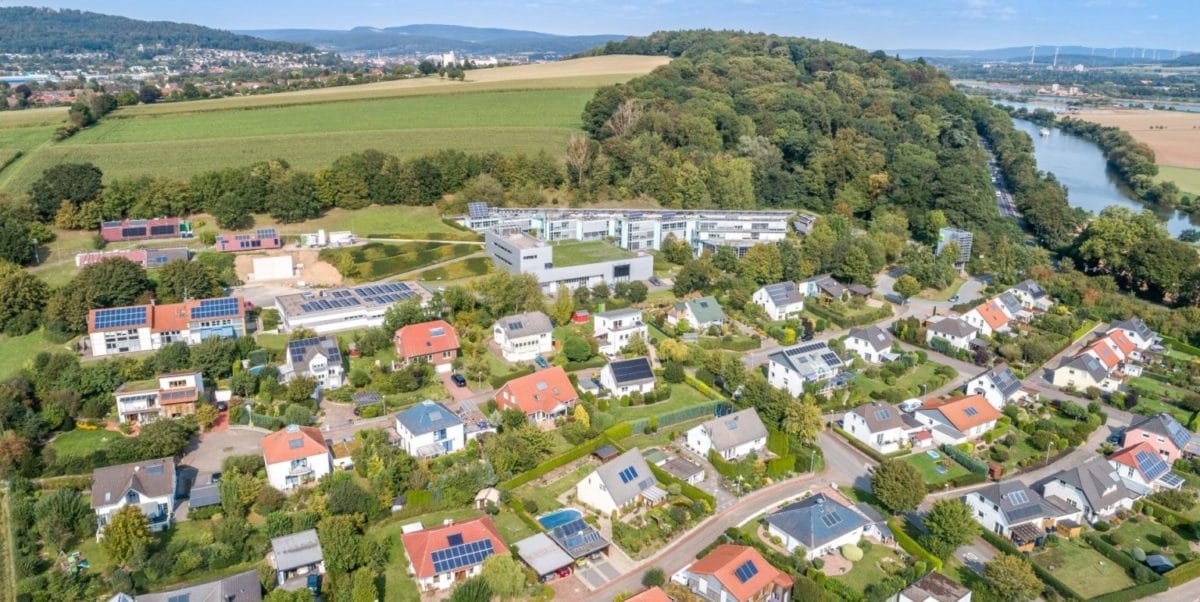From pv magazine Germany
Scientists at the Institute for Solar Energy Research Hamelin (ISFH), in Germany, are investigating the feasibility of powering and heating entire town districts with wind, solar, and heat pumps.
The German group is seeking, in particular, to assess how the share of renewable energy in residential areas can be increased in various scenarios using both thermal and electrical storage systems in conjunction with heat pumps.
For this purpose, two residential areas in Lower Saxony and Bavaria, located in the north and the south of the country, respectively, were chosen, and their electricity and heat generation and demand were calculated considering power production from wind and solar in their proximity.
“The result showed that, with well-chosen management, you can achieve a very high level of regional coverage with renewable energies that exceeds the 80% mark,” explained Tobias Ohrdes, head of the ISFH working group.
According to their simulations, more than 60% of electricity demand could be covered directly by wind and solar power. A further 20% of demand may be covered with battery storage and smart control of the heat pumps with the locally generated wind and solar power. If the heat pump operation is coordinated in the entire districts, the renewable supply increases by a further four percentage points compared to an uncoordinated operation, the Hamelin researchers stated.
In the results, however, it must be taken into account that the wind farms feed into the medium-voltage network and, therefore, this power cannot be used per se for regional needs. “An argument in favor of the regional use of wind energy is that its generation over the course of the year usually matches well the demand for heat pumps in buildings,” continued Ohrdes.
Popular content
From the investigations of the project funded by the Federal Ministry of Economics, derivations should now arise. “We will make recommendations for planners on how best to combine the electricity supply from wind power and solar systems with the demand for heat pumps in residential areas,” explained Ohrdes, adding that five more heat pump districts will be created in cooperation with the Lower Saxony Climate Protection and Energy Agency.
The research institute OFFIS is also taking part in the project to test how the output of power from the storage systems is being managed. Several companies equipped with battery storage have tested the so-called ‘software agents' created by the OFFIS group. “Such software agents can make decisions independently and they can also be controlled very well”, explained Martin Tröschel, OFFIS co-group leader for distributed artificial intelligence.
The software agents are claimed to be able to decide independently when battery storage should transfer charged energy to the grid, with peak shaving being chosen in the software as a key criterion. “The system successfully organized itself completely in the field test,” Tröschel said. “There is no central authority that assigns a timetable to each storage unit, as is the case in virtual power plants.”
This is considered by the scientists a big plus, especially in view of the further increase in deployment of decentralized renewable energy systems. “Central control units will reach their limits with an increasing number of power generators,” added joint group leader Stefanie Holly. For the future, it is an important task of applied research to take away power managers' skepticism towards software agents.
The research project is being funded by the German Federal Ministry of Economics.
This content is protected by copyright and may not be reused. If you want to cooperate with us and would like to reuse some of our content, please contact: editors@pv-magazine.com.



That’s a great achievement in solar and wind on off grid by use of software agent to control the charged battery to release energy into the grid this will save the life span of the battery
I salute the hard work the researcher have achieved.
I think the figure could be pushed higher yet, and be extended to incorporate electrified transport using
1. Smart charging of EVs, using up excess power when available – so allowing a higher installed capacity.
or
2. Be taken a step further with vehicle to building or vehicle to grid chargers.